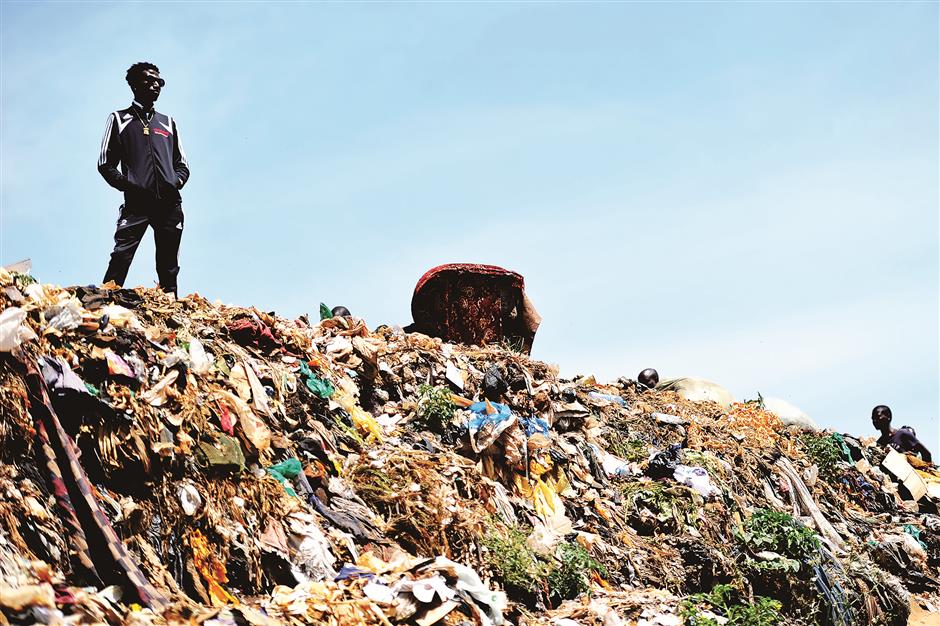Nairobi rap king inspiring a slum generation

Ohanga looks out over the slum from a garbage mound during a visit earlier this year.
Like most youngsters in Nairobi’s largest slum, Henry Ohanga grew up believing he would never amount to anything.
Making it big or leaving Kibera weren’t things that happened to orphans who once robbed people to buy food.
Now 29, he is Octopizzo, one of East Africa’s most recognized hip-hop stars, and is using his success to break down stigma around the slum and inspire kids in a world devoid of role models.
“It’s everything, everything I rap about. I feel like if I wasn’t born here I probably wouldn’t be a rapper,” he said.
Kibera stretches over an area of about 2.5 square kilometers, a poor ethnic melting pot wedged among richer areas of the Kenyan capital where its residents work mostly as casual laborers.
The slum’s population is subject to debate. An old NGO slogan of “the biggest slum in Africa” challenged in recent years by a government census, and other independent studies, which say between 170,000 and 250,000 people live there.
To Octopizzo, Kibera is the place he loves “more than anything else in the world” and it features in every one of his songs. In Kibera it is not the rubbish packed into dirt or debris-choked streams that strike Ohanga.
He is inspired by the “uniquely beautiful vibe,” children, in brightly colored uniforms making their way to school, music blaring from speakers around every corner, the whirr of sewing machines set-up in open air and the rhythm and beat of the hustle.
“I don’t blame the people. If you look at Kibera this is the definition of a failed system,” he said.
While he describes himself as more “socially conscious” than political, it is hard to avoid tough topics in the slum.
During Kenya’s 2007 post-election crisis, he recalls having to walk with a machete for protection, as the slum was torn apart by ethnic violence he blames on politicians. However his big commercial break came in 2012, through an arts program at the British Council.
Ohanga has moved on to rapping about things like food and fashion from Kibera, to change the negative image of the slum. But politics and Kibera remain deeply intertwined, and when post-election protests broke out last year, Ohanga came to the slum to speak to both protesters and police, and criticized police violence that left scores dead in Kenya, including residents of the slum.
“I have a voice and I have to use it, whether people like it or not,” he said.
Ohanga had never planned to be a rapper, he wanted to be a horticulturist. But the opportunity never came his way. His father died when he was 14, his mother a year later, and he ended up living with a friend and joining a gang, robbing shops and people.
“I never regret being part of that, I never killed anybody,” said Ohanga.
Through his own foundation, and work with the UN refugee agency, he wants to help youths realize their potential. In 2016, artists from the Kakuma and Dadaab refugee camps who were trained and mentored by Ohanga released an album called “Refugeenius.”
“I want to be the face of possibility. When we grew up we didn’t know anyone who was successful. Kids are told by their teachers, their parents that they will never be anything, it is not our destiny,” said Ohanga.















